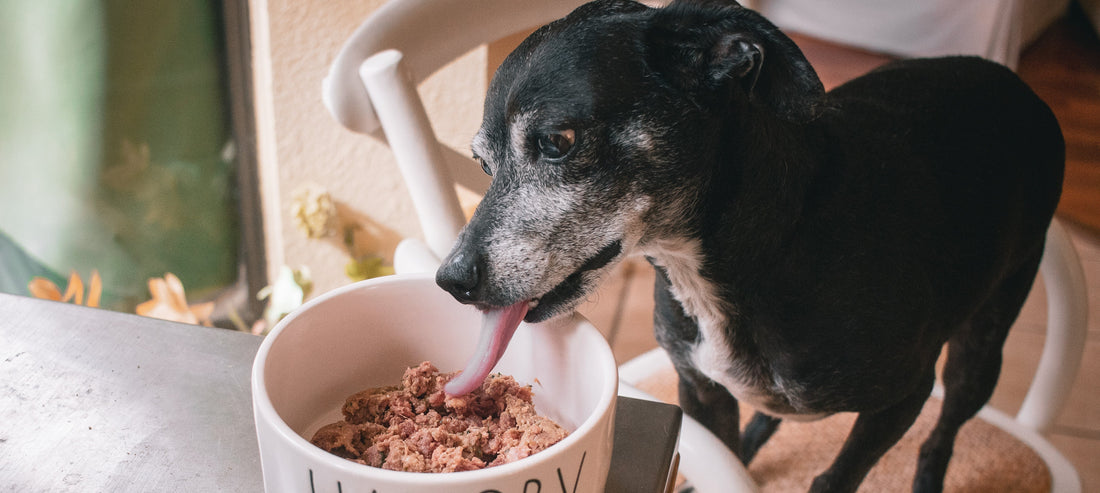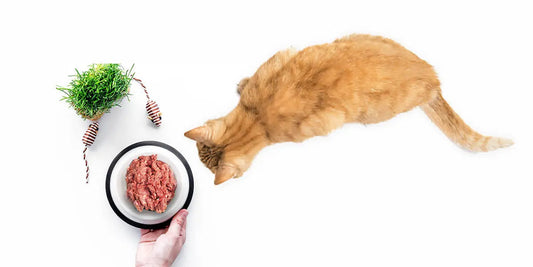
How to Transition Your Dog to a Raw Diet
Written by Darwin's
If you think your dog won’t eat raw dog food because they are just too finicky, you’re not alone. Here’s a comment from a real customer who had labeled her Pug, Duke, “a serial selective eater.” She wrote:
“When we mixed Darwin’s into Duke’s food for the first time, he just stared at it like it wasn’t even food. Now Duke loves his new food so much that he cries like a baby when we take the Darwin’s container out of the fridge. He inhales it like he’s been fed this by mistake and any second we’re going to take it away.”
Like humans, all dogs are different. Your dog may never inhale its food like good old Duke. However if you’d like to give raw dog food a try (and we hope you do) we’ve compiled a few tips to help transition your dog to a raw diet.
Benefits of Raw Feeding
Offering your pet a raw diet may yield numerous advantages. The benefits of raw dog food include boosting your dog’s digestive efficiency and nutrient absorption, supporting better weight control and overall vitality. Gradually adjust this diet to align with your dog’s unique health needs and monitor their reaction throughout the transition.
Raw Diet Transition Guide
When first switching your pet to a raw diet, it might go through a transition phase where temporary symptoms like loose stools or mild energy dips occur. This response is natural as their systems gradually adjust to the new diet and shed processed foods. Ensure they stay hydrated and watch for any prolonged digestive issues. It's important to recommend patience during this time to see the best results from feeding raw. If concerns arise, reaching out to your vet can ensure a smoother transition experience. Remember, taking gradual steps can lead to a happier, healthier pet.
Five Easy Steps for Easing Raw Food into Your Dog’s Diet
- Mix in a little bit of raw with their regular food (dry or wet). This method eases your dog’s stomach into the new feeding regimen.
- Leave the room. Sticking around to cajole or persuade only makes it more stressful for both you and your dog.
- Wait about 15 minutes. If the food is still untouched, stick it in the fridge until the next meal.
- Don’t feed your dog anything until the next meal. The absence of meals can prompt a more eager attitude towards eating.
- If it happens again, repeat the process the next day with fresh dog food. Don’t worry – it’s perfectly all right for a healthy dog to miss a meal or two (in fact some might benefit from it!).
Some of you may already have your dog a raw diet without any transition issues. However, sometimes we hear from customers that their dog will stop eating raw food after a few months. From our experience, these tend to be dogs who once ate kibble or canned food for the majority of their life. For those of you who have experienced this, consider adding duck necks dog treats to their meals. It can be a delicious and nutritious option that might entice them back into their raw food routine. Here are a few tips to get your reluctant eater back on a raw diet.
Five easy steps to reintroduce raw, fresh dog food back into your dog’s diet:
- Temporarily place your dog back on food they originally ate prior to a raw diet.
- Keep them on this diet for about 2 weeks.
- After 2 weeks, slowly add back a little bit of raw with their original food.
- Observe to see if your dog begins to eat their raw dog food portions.
- Each day, add a little more to their bowl until they are 100% back on a raw diet!
Many dogs are uncomfortable with change (especially finicky ones), so take it slow and be patient. Consider adding raw options into their treat routine in addition to their meals, like Darwin’s duck neck dog treats or beef femur bones for dogs.Taking the time to understand each step of transitioning brings positive changes.
TIP: Occasionally add some human superfoods for dogs like eggs, salmon, oysters or sardines. It’s great for them and will make them even more interested in their new food.


